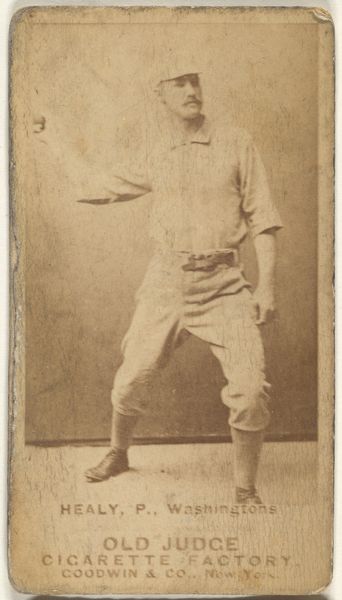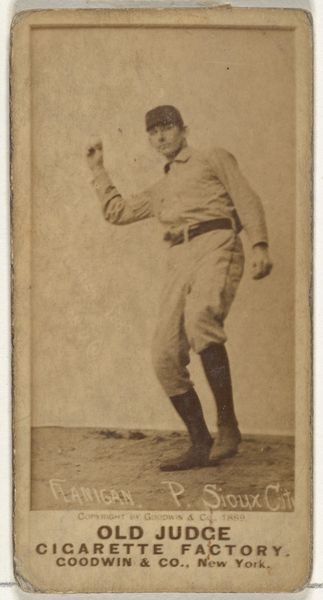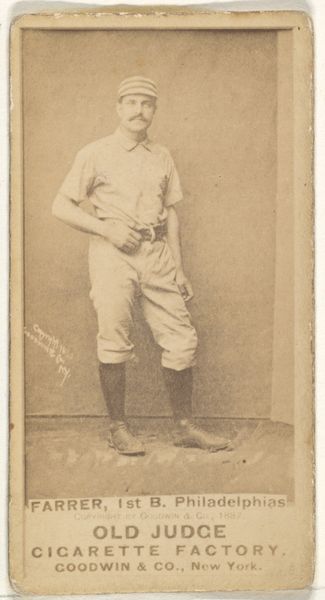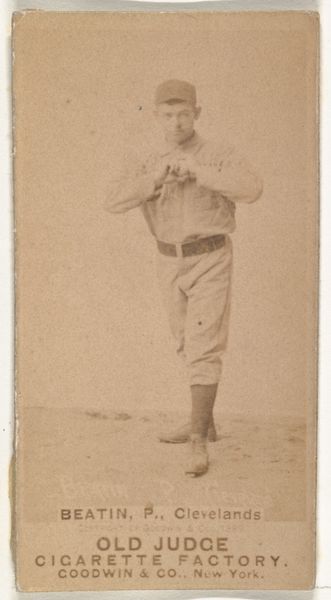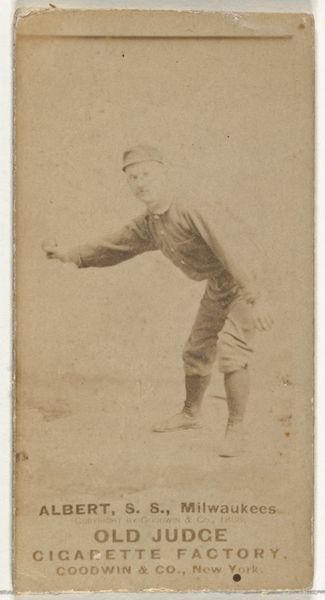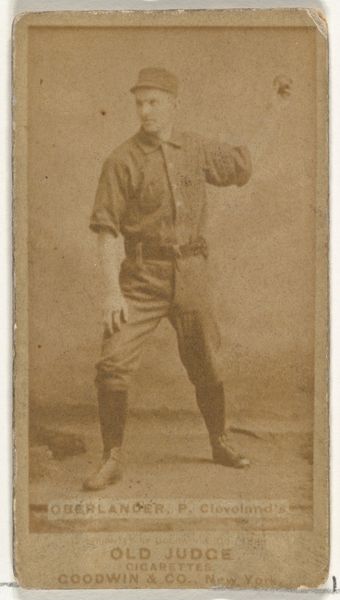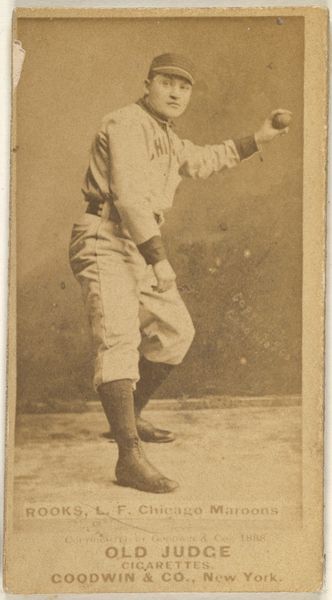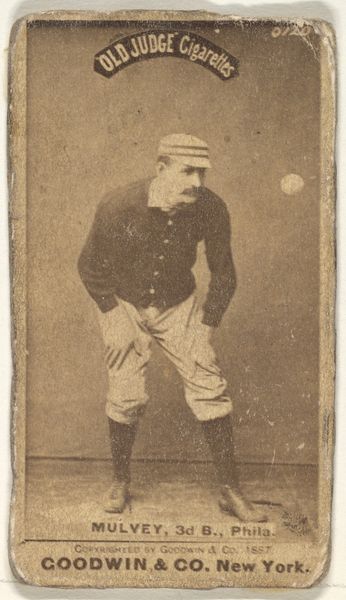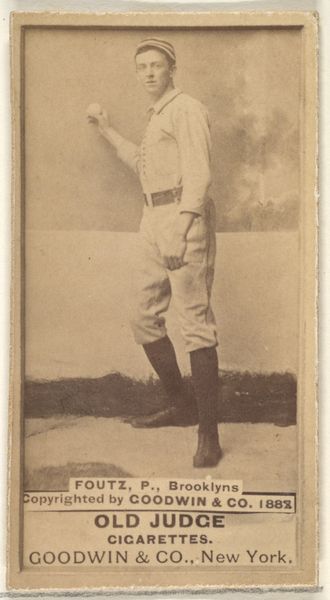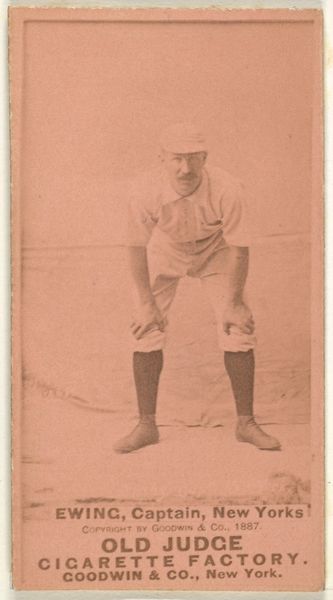
Arthur Albert "Doc" Irwin, Shortstop, Philadelphia, from the Old Judge series (N172) for Old Judge Cigarettes 1887
0:00
0:00
print, photography, gelatin-silver-print
#
portrait
# print
#
impressionism
#
baseball
#
photography
#
gelatin-silver-print
#
19th century
#
men
#
athlete
Dimensions: sheet: 2 11/16 x 1 3/8 in. (6.9 x 3.5 cm)
Copyright: Public Domain
Editor: This is "Arthur Albert 'Doc' Irwin, Shortstop, Philadelphia," a photograph from the Old Judge series for Old Judge Cigarettes, made in 1887. It's a pretty straightforward portrait of a baseball player, but the sepia tone gives it a wistful, almost nostalgic feel. What stands out to you? Curator: What immediately strikes me is how this image operates as a historical document embedded within a matrix of commerce and popular culture. This photograph, produced as a collectible card for a cigarette brand, intersects with several key narratives of the late 19th century. It speaks to the burgeoning popularity of baseball as a professional sport, but also to the rise of consumer culture and advertising. Editor: So, more than just a picture of a baseball player, it's about… broader societal shifts? Curator: Precisely. Consider how the commodification of athletes through these cards contributed to the construction of celebrity and ideals of masculinity. Who was included, and who was excluded from these images? We must think about the power structures at play in determining representation during this era. Whose stories were amplified, and whose were erased? What can the visual language and composition of this piece reveal about prevailing attitudes and biases? Editor: That's interesting, I hadn't really considered that. I was just thinking about the aesthetics and, you know, baseball! Curator: And the aesthetics absolutely matter. The photographic techniques and printing processes, such as the gelatin-silver print method, allowed for mass production and dissemination of these images, which created a visual culture where individuals from different social strata engaged with these representations of celebrity. How do you think the photographic quality affects how we see this image now, in a contemporary context? Editor: I see what you mean. Knowing it was mass-produced for cigarettes definitely changes the way I see it. I guess it’s less about the individual player and more about what he represents. Curator: Exactly. We can now use it to examine advertising, popular culture, celebrity culture, and the beginnings of the sports industry, with an important view to issues of identity and representation. It’s a powerful thing to consider! Editor: This has really given me a fresh perspective on looking at art with an understanding of social issues.
Comments
No comments
Be the first to comment and join the conversation on the ultimate creative platform.
